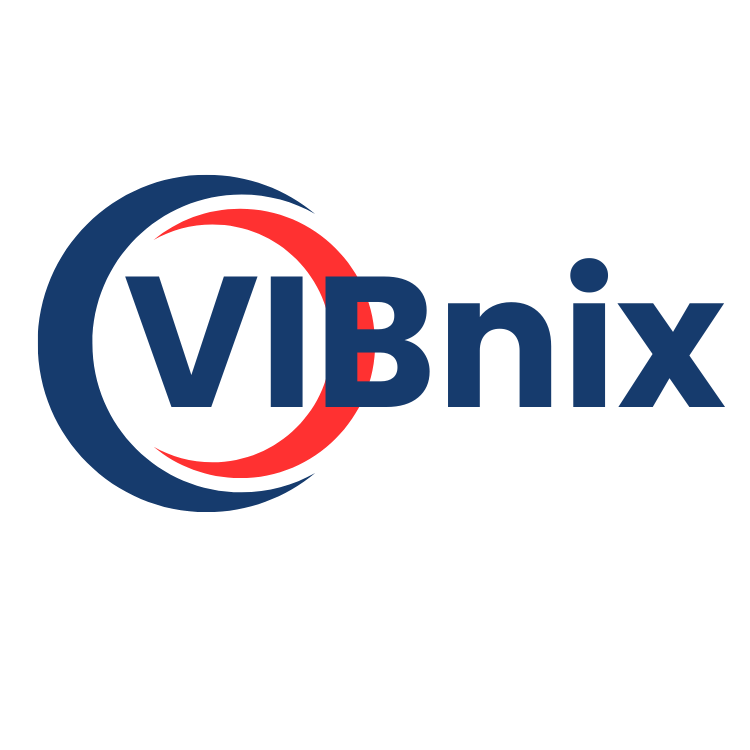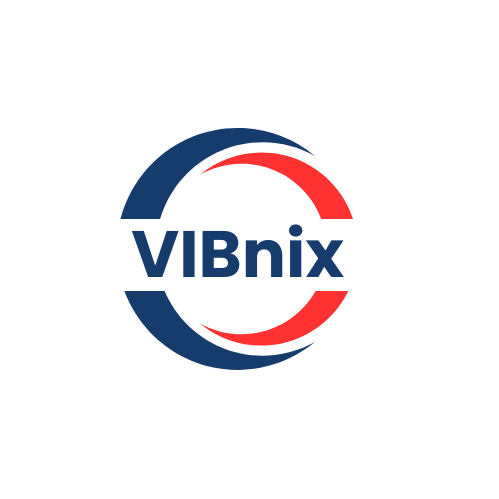Sponsored
Recent Updates
-
Competitive Landscape of Causal AI ProvidersThe Causal AI market is emerging as a transformative force in the field of artificial intelligence, focused on understanding the cause-and-effect relationships inherent in data. Unlike traditional AI, which often relies on correlation-based models, Causal AI aims to uncover the underlying mechanisms driving observed outcomes. This market is gaining traction as organizations seek more...0 Comments 0 Shares 957 ViewsPlease log in to like, share and comment!
-
Competitive Landscape of Online Art PlatformsThe online fine art market is experiencing robust growth, driven by the digitalization of the art world and a growing consumer base comfortable with online transactions. This market enables collectors, investors, and art enthusiasts to purchase artwork from across the globe, often at lower prices and with greater convenience than traditional gallery or auction house routes. With the...0 Comments 0 Shares 1K Views
-
Challenges in Data Governance ImplementationThe Data Governance Market is experiencing rapid growth as businesses across industries recognize the importance of maintaining accurate, consistent, and secure data. Data governance, which involves the management of data's availability, usability, integrity, and security, is essential for organizations navigating an increasingly digital and data-centric landscape. With data volumes...0 Comments 0 Shares 1K Views
-
Competitive Landscape of Cloud Contact Center ProvidersMarket Overview The cloud-based contact center market has grown significantly over the past decade as businesses shift to cloud infrastructure for better flexibility, scalability, and cost-efficiency in customer service operations. Cloud-based contact centers are customer service hubs hosted on the internet, enabling agents to interact with customers over various channels such as...0 Comments 0 Shares 997 Views
-
Investment Trends in Threat Intelligence StartupsMarket Overview:The Threat Intelligence Platform Market is a rapidly growing sector within the cybersecurity landscape, driven by the increasing frequency and sophistication of cyber-attacks. These platforms are designed to collect, analyze, and share information on potential cyber threats to help organizations proactively defend against security breaches. The global threat intelligence market...0 Comments 0 Shares 1K Views
-
Future Prospects of Data Protection and Recovery MarketThe Data Protection and Recovery Solution Market is experiencing significant growth as organizations across various industries prioritize data security, integrity, and rapid recovery capabilities to safeguard against increasing threats like cyberattacks, natural disasters, and operational failures. This market includes a variety of solutions designed to ensure that sensitive data is...0 Comments 0 Shares 1K Views
-
Investment Trends in Self-supervised Learning StartupsThe Self-Supervised Learning (SSL) market is rapidly transforming the landscape of artificial intelligence (AI) by offering a powerful alternative to traditional supervised and unsupervised learning models. Self-supervised learning allows systems to learn patterns, structures, and representations from unlabeled data by generating their own supervisory signals, significantly reducing...0 Comments 0 Shares 1K Views
-
Market Dynamics of Script Writing ApplicationsThe Screen and Script Writing Software Market has witnessed steady growth as storytelling continues to expand across digital platforms, streaming services, independent film, and traditional media. The rise of content-driven strategies in entertainment, education, gaming, and marketing has propelled the demand for robust and user-friendly scriptwriting tools. These software solutions...0 Comments 0 Shares 998 Views
-
Regulatory Impacts on Telecom Billing Strategies
The Telecom Billing and Revenue Management market has become a cornerstone of the global telecommunications industry, facilitating seamless financial operations, billing accuracy, and revenue assurance across diverse service offerings. As telecom operators continue to expand their services—ranging from traditional voice and SMS to high-speed data, IoT, and 5G—the complexity of billing systems and revenue streams has intensified. This growing complexity has fueled the demand for robust billing and revenue management solutions that can handle real-time processing, multi-service packages, and dynamic pricing models. The rise in prepaid and postpaid subscriptions, bundling of telecom services, and the transition to digital platforms have further solidified the importance of integrated billing and revenue management solutions. These systems not only enhance operational efficiency but also ensure compliance with evolving regulatory frameworks and improve customer satisfaction by delivering transparent and accurate billing experiences.
Get a sample PDF of the report at – https://www.marketresearchfuture.com/sample_request/10448
The market segmentation of the Telecom Billing and Revenue Management market reflects its multifaceted role in the telecom sector. Based on component, the market is segmented into solutions and services. Solutions include billing, charging, mediation, fraud management, and revenue assurance platforms. These enable telecom providers to track usage, generate invoices, manage customer accounts, and mitigate revenue leakages. Services, on the other hand, comprise consulting, implementation, managed services, and support, helping telecom companies deploy and optimize their billing systems. By deployment type, the market is divided into on-premise and cloud-based solutions, with the latter gaining momentum due to its scalability, cost-effectiveness, and flexibility. In terms of telecom operator type, segmentation includes mobile operators, internet service providers, satellite communication providers, and fixed-line operators. The end-user segment is further categorized into residential and commercial consumers, reflecting the diversity in customer bases and billing needs.
Prominent key players in the Telecom Billing and Revenue Management market are driving innovation and competition through advanced technologies, customer-centric solutions, and global partnerships. Leading companies include Amdocs, Huawei Technologies Co., Ltd., Ericsson, Netcracker Technology, CSG International, Nokia Corporation, SAP SE, Oracle Corporation, Comarch SA, and HPE (Hewlett Packard Enterprise). These companies provide end-to-end platforms that encompass billing, charging, mediation, and customer care functionalities. Their solutions are tailored to meet the demands of next-generation telecom networks and digital service providers. Many of these players have also expanded their capabilities through acquisitions and strategic alliances, enabling them to offer comprehensive, modular, and interoperable platforms for telecom operators of all sizes. The presence of niche players and regional vendors also adds to the market’s competitiveness, especially in developing economies where localization and cost optimization are crucial.
The market dynamics influencing the Telecom Billing and Revenue Management market are driven by both external trends and internal industry needs. Key growth drivers include the rapid expansion of mobile data services, widespread 5G rollouts, and increasing use of over-the-top (OTT) services that require more sophisticated billing structures. Additionally, the rise in digital transformation initiatives among telecom providers and the growing need for revenue assurance solutions to prevent financial leakages contribute to market growth. However, the market faces challenges such as integration complexities, data security concerns, and the high cost of upgrading legacy systems. Ensuring compliance with diverse regulatory requirements across regions also adds a layer of complexity. Nevertheless, the shift towards cloud-based platforms and the integration of artificial intelligence (AI), machine learning (ML), and blockchain in billing systems are creating new opportunities. These technologies enable real-time billing, predictive analytics, fraud detection, and improved decision-making capabilities, paving the way for future-ready revenue management ecosystems.
Recent developments in the Telecom Billing and Revenue Management market reflect its fast-paced and evolving nature. Companies are increasingly focusing on automation and real-time processing to improve operational efficiency and customer engagement. For instance, Amdocs recently launched a cloud-native billing platform designed to support 5G monetization and hybrid business models. Similarly, Ericsson enhanced its Digital BSS (Business Support Systems) portfolio with AI-powered capabilities for dynamic pricing and usage tracking. Strategic collaborations between telecom operators and software vendors are also becoming more common, with a focus on co-developing solutions tailored to regional markets. Additionally, the adoption of DevOps and microservices architectures is helping telecom providers quickly adapt to market changes, reduce time-to-market, and innovate service offerings. Investments in cybersecurity, data encryption, and fraud management have also intensified, ensuring the resilience and reliability of modern billing platforms.
Browse a Full Report – https://www.marketresearchfuture.com/reports/telecom-billing-revenue-management-market-10448
From a regional perspective, the Telecom Billing and Revenue Management market exhibits strong demand across all major geographies, with specific trends and growth factors in each region. North America dominates the market due to the early adoption of advanced telecom technologies, presence of major market players, and high penetration of 5G and IoT services. The United States and Canada are leading in terms of cloud-based billing platforms and digital customer engagement strategies. Europe follows closely, with strong regulatory frameworks and a growing focus on real-time billing and service convergence. Countries like Germany, the UK, and France are embracing revenue management tools to ensure compliance and improve service monetization. In the Asia-Pacific region, rapid urbanization, expanding mobile user bases, and increasing investments in telecom infrastructure are driving market growth. Countries such as China, India, and South Korea are leading adopters, with government support and digital economy initiatives fueling demand. Meanwhile, Latin America and the Middle East & Africa are emerging as high-potential markets, where telecom operators are modernizing their billing systems to cater to growing demand for digital services and improved customer experiences. Localized solutions, strategic partnerships, and mobile-first strategies are helping vendors tap into these underserved markets.
In conclusion, the Telecom Billing and Revenue Management market stands as a critical enabler of financial efficiency, operational transparency, and customer satisfaction within the global telecom landscape. As the telecom industry evolves with the introduction of 5G, IoT, and digital service ecosystems, the need for advanced billing and revenue management solutions is more pressing than ever. Telecom providers must adopt scalable, secure, and intelligent platforms to meet the demands of today’s connected consumers and complex service models. With ongoing innovation, strategic investments, and a keen focus on user experience, the future of telecom billing is not only digital but also intelligent and adaptive, promising sustained growth and transformation in the years to come.
About Market Research Future:
At Market Research Future (MRFR), we enable our customers to unravel the complexity of various industries through our Cooked Research Report (CRR), Half-Cooked Research Reports (HCRR), Raw Research Reports (3R), Continuous-Feed Research (CFR), and Market Research Consulting Services.
MRFR team have supreme objective to provide the optimum quality market research and intelligence services to our clients. Our market research studies by products, services, technologies, applications, end users, and market players for global, regional, and country-level market segments, enable our clients to see more, know more, and do more, which help to answer all their most important questions.
Also, we are launching “Wantstats” the premier statistics portal for market data in comprehensive charts and stats format, providing forecasts, and regional and segment analysis. Stay informed and make data-driven decisions with Wantstats.
Contact:
Market Research Future (Part of Wantstats Research and Media Private Limited)
99 Hudson Street, 5Th Floor
New York, NY 10013
United States of America
+1 628 258 0071 (US)
+44 2035 002 764 (UK)
Email: sales@marketresearchfuture.comRegulatory Impacts on Telecom Billing Strategies The Telecom Billing and Revenue Management market has become a cornerstone of the global telecommunications industry, facilitating seamless financial operations, billing accuracy, and revenue assurance across diverse service offerings. As telecom operators continue to expand their services—ranging from traditional voice and SMS to high-speed data, IoT, and 5G—the complexity of billing systems and revenue streams has intensified. This growing complexity has fueled the demand for robust billing and revenue management solutions that can handle real-time processing, multi-service packages, and dynamic pricing models. The rise in prepaid and postpaid subscriptions, bundling of telecom services, and the transition to digital platforms have further solidified the importance of integrated billing and revenue management solutions. These systems not only enhance operational efficiency but also ensure compliance with evolving regulatory frameworks and improve customer satisfaction by delivering transparent and accurate billing experiences. Get a sample PDF of the report at – https://www.marketresearchfuture.com/sample_request/10448 The market segmentation of the Telecom Billing and Revenue Management market reflects its multifaceted role in the telecom sector. Based on component, the market is segmented into solutions and services. Solutions include billing, charging, mediation, fraud management, and revenue assurance platforms. These enable telecom providers to track usage, generate invoices, manage customer accounts, and mitigate revenue leakages. Services, on the other hand, comprise consulting, implementation, managed services, and support, helping telecom companies deploy and optimize their billing systems. By deployment type, the market is divided into on-premise and cloud-based solutions, with the latter gaining momentum due to its scalability, cost-effectiveness, and flexibility. In terms of telecom operator type, segmentation includes mobile operators, internet service providers, satellite communication providers, and fixed-line operators. The end-user segment is further categorized into residential and commercial consumers, reflecting the diversity in customer bases and billing needs. Prominent key players in the Telecom Billing and Revenue Management market are driving innovation and competition through advanced technologies, customer-centric solutions, and global partnerships. Leading companies include Amdocs, Huawei Technologies Co., Ltd., Ericsson, Netcracker Technology, CSG International, Nokia Corporation, SAP SE, Oracle Corporation, Comarch SA, and HPE (Hewlett Packard Enterprise). These companies provide end-to-end platforms that encompass billing, charging, mediation, and customer care functionalities. Their solutions are tailored to meet the demands of next-generation telecom networks and digital service providers. Many of these players have also expanded their capabilities through acquisitions and strategic alliances, enabling them to offer comprehensive, modular, and interoperable platforms for telecom operators of all sizes. The presence of niche players and regional vendors also adds to the market’s competitiveness, especially in developing economies where localization and cost optimization are crucial. The market dynamics influencing the Telecom Billing and Revenue Management market are driven by both external trends and internal industry needs. Key growth drivers include the rapid expansion of mobile data services, widespread 5G rollouts, and increasing use of over-the-top (OTT) services that require more sophisticated billing structures. Additionally, the rise in digital transformation initiatives among telecom providers and the growing need for revenue assurance solutions to prevent financial leakages contribute to market growth. However, the market faces challenges such as integration complexities, data security concerns, and the high cost of upgrading legacy systems. Ensuring compliance with diverse regulatory requirements across regions also adds a layer of complexity. Nevertheless, the shift towards cloud-based platforms and the integration of artificial intelligence (AI), machine learning (ML), and blockchain in billing systems are creating new opportunities. These technologies enable real-time billing, predictive analytics, fraud detection, and improved decision-making capabilities, paving the way for future-ready revenue management ecosystems. Recent developments in the Telecom Billing and Revenue Management market reflect its fast-paced and evolving nature. Companies are increasingly focusing on automation and real-time processing to improve operational efficiency and customer engagement. For instance, Amdocs recently launched a cloud-native billing platform designed to support 5G monetization and hybrid business models. Similarly, Ericsson enhanced its Digital BSS (Business Support Systems) portfolio with AI-powered capabilities for dynamic pricing and usage tracking. Strategic collaborations between telecom operators and software vendors are also becoming more common, with a focus on co-developing solutions tailored to regional markets. Additionally, the adoption of DevOps and microservices architectures is helping telecom providers quickly adapt to market changes, reduce time-to-market, and innovate service offerings. Investments in cybersecurity, data encryption, and fraud management have also intensified, ensuring the resilience and reliability of modern billing platforms. Browse a Full Report – https://www.marketresearchfuture.com/reports/telecom-billing-revenue-management-market-10448 From a regional perspective, the Telecom Billing and Revenue Management market exhibits strong demand across all major geographies, with specific trends and growth factors in each region. North America dominates the market due to the early adoption of advanced telecom technologies, presence of major market players, and high penetration of 5G and IoT services. The United States and Canada are leading in terms of cloud-based billing platforms and digital customer engagement strategies. Europe follows closely, with strong regulatory frameworks and a growing focus on real-time billing and service convergence. Countries like Germany, the UK, and France are embracing revenue management tools to ensure compliance and improve service monetization. In the Asia-Pacific region, rapid urbanization, expanding mobile user bases, and increasing investments in telecom infrastructure are driving market growth. Countries such as China, India, and South Korea are leading adopters, with government support and digital economy initiatives fueling demand. Meanwhile, Latin America and the Middle East & Africa are emerging as high-potential markets, where telecom operators are modernizing their billing systems to cater to growing demand for digital services and improved customer experiences. Localized solutions, strategic partnerships, and mobile-first strategies are helping vendors tap into these underserved markets. In conclusion, the Telecom Billing and Revenue Management market stands as a critical enabler of financial efficiency, operational transparency, and customer satisfaction within the global telecom landscape. As the telecom industry evolves with the introduction of 5G, IoT, and digital service ecosystems, the need for advanced billing and revenue management solutions is more pressing than ever. Telecom providers must adopt scalable, secure, and intelligent platforms to meet the demands of today’s connected consumers and complex service models. With ongoing innovation, strategic investments, and a keen focus on user experience, the future of telecom billing is not only digital but also intelligent and adaptive, promising sustained growth and transformation in the years to come. About Market Research Future: At Market Research Future (MRFR), we enable our customers to unravel the complexity of various industries through our Cooked Research Report (CRR), Half-Cooked Research Reports (HCRR), Raw Research Reports (3R), Continuous-Feed Research (CFR), and Market Research Consulting Services. MRFR team have supreme objective to provide the optimum quality market research and intelligence services to our clients. Our market research studies by products, services, technologies, applications, end users, and market players for global, regional, and country-level market segments, enable our clients to see more, know more, and do more, which help to answer all their most important questions. Also, we are launching “Wantstats” the premier statistics portal for market data in comprehensive charts and stats format, providing forecasts, and regional and segment analysis. Stay informed and make data-driven decisions with Wantstats. Contact: Market Research Future (Part of Wantstats Research and Media Private Limited) 99 Hudson Street, 5Th Floor New York, NY 10013 United States of America +1 628 258 0071 (US) +44 2035 002 764 (UK) Email: sales@marketresearchfuture.comWWW.MARKETRESEARCHFUTURE.COMSample Request for Telecom Billing & Revenue Management Market Research Report – Forecast till 2032Sample Request - Telecom Billing & Revenue Management market industry is projected to grow from USD 63.07 Billion in 2024 to USD 100.63 Billion by 20320 Comments 0 Shares 1K Views
More Stories













